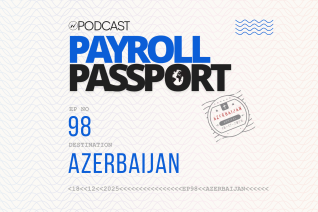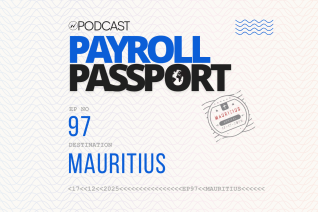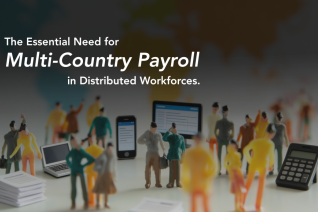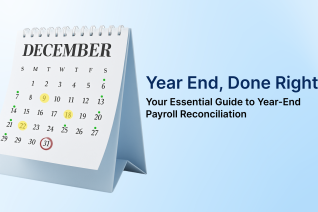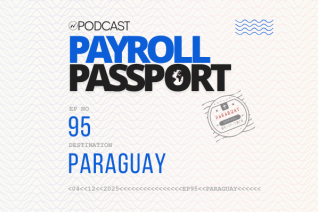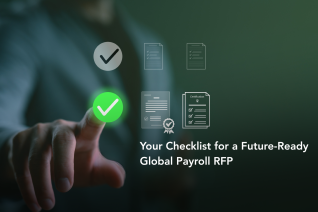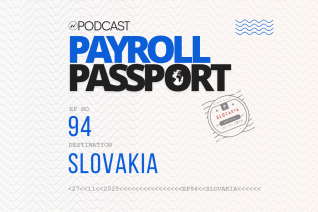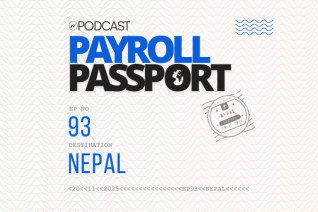How to Build a Scalable Global Payroll Strategy in 2025
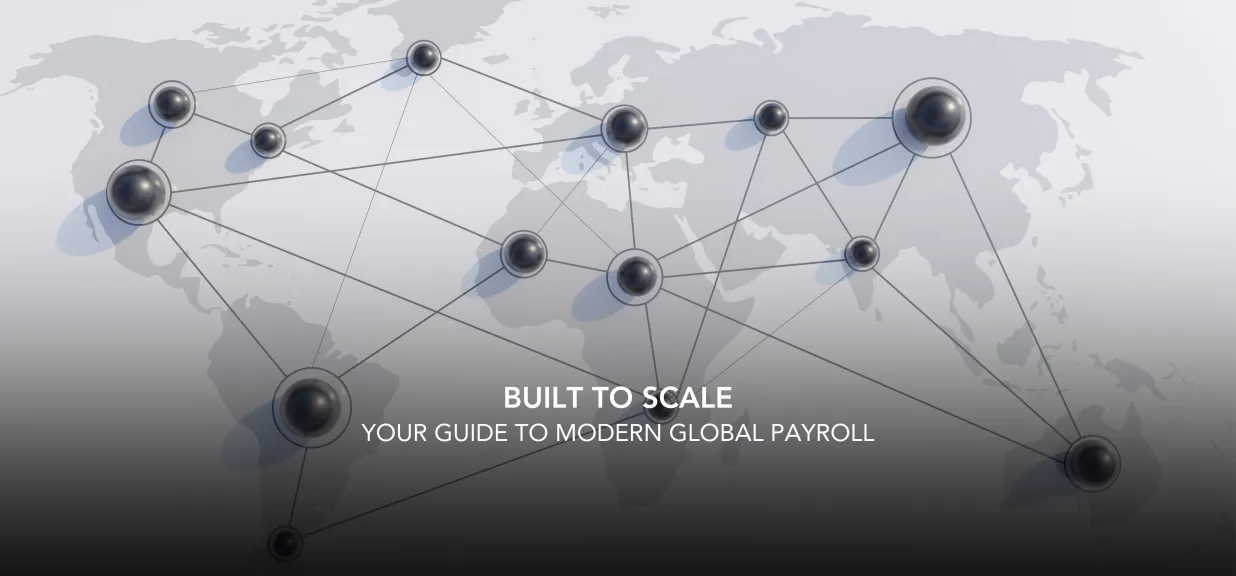
Why a Global Payroll Strategy Can’t Wait
In today’s increasingly decentralized work environment, where distributed teams, digital nomads, and borderless hiring are fast becoming the norm, payroll leaders face a new reality. The need for a unified, future-ready global payroll strategy has moved from “nice to have” to “mission-critical.”
Deloitte’s 2025 Payroll Benchmarking Survey paints a telling picture: 84% of organizations manage more than 20 payroll integrations, reflecting a complex web of systems, local vendors, and in-country compliance needs. This kind of fragmentation makes achieving global visibility and control not only difficult but very expensive.
The takeaway? Global payroll transformation isn’t just about operational efficiency; it’s about building an engine for agility, trust, and growth.
What’s Driving the Need for Global Payroll Transformation
1. Global Workforce Models Are Evolving
Hybrid models. Freelancers. Cross-border contractors. The payroll engine must now cater to a highly diverse and distributed workforce. Each country brings its own legal framework around wages, bonuses, benefits, and severance. Delivering accurate, on-time pay requires more than just standardization; It demands a model that supports local depth within a global structure.
2. Non-Compliance Is an Expensive Risk
As companies expand across geographies, keeping pace with legal updates, statutory filings, and regional obligations is a growing challenge, especially in countries with smaller employee populations where in-house expertise is limited.
The financial and reputational risks of non-compliance are pushing organizations to embed regulatory awareness directly into the payroll strategy, from the earliest planning stages to day-to-day operations.
3. Employee Expectations Are Changing
Employees today expect more than just punctual paychecks. They want visibility, control, and transparency. They expect self-service tools, real-time updates, and support in their preferred language. A scalable payroll model must meet these expectations head-on, ensuring payroll isn’t just accurate but also accessible and empowering.
The Proven Six-Part Framework for Scalable Global Payroll: The Neeyamo Approach
1. Start with One Unified Platform, Powered by Country-Specific Engines
The foundation of scalable payroll is a unified system that offers both central oversight and local adaptability. A strong platform enables consolidated reporting, standardized processes, and faster response to business needs, while supporting country-specific wage elements, tax codes, and employment regulations.
- Global governance with localized configurations
- Native processing logic for each country
- End-to-end integration with HCM and finance systems
- Standardized reporting and compliance tracking
This ensures both global control and local relevance are at scale.
2. Follow a Phased Implementation Approach
Effective transformation doesn’t happen in a single sweep. It requires a deliberate, phased rollout to ensure accuracy, stakeholder alignment, and operational readiness.
- Global Design: Harmonize core processes and integration standards
- Country Workshops: Align with local regulations and stakeholder needs
- Configuration: Build platform interfaces and payroll logic
- Testing: Conduct UAT with live scenarios and payroll test cases
- Parallel Runs: Compare results with legacy systems for validation
- Go Live & Hypercare: Transition to new system with a stabilization buffer
This wave-based deployment model offers predictability, precision, and control.
ALSO READ | Why Global Payroll Needs a Unified Platform with Built-In Country Engines
3. Prioritize Seamless, Integrated Workflows
Scattered data inputs from time, leave, benefits, and HR systems often derail payroll accuracy. Building automated, bidirectional connections between platforms ensures clean data flow and minimizes delays or errors.
- Flat-file and API-based connectors
- Real-time sync of hire/rehire, demographic changes, and compensation updates
- Feeds for payslip data and financial journal entries
Tightly integrated workflows reduce manual interventions and drive payroll speed and accuracy.
4. Bake Compliance into the Engine
Compliance shouldn’t be an afterthought. Leading organizations design it into the core of their payroll operations, from setup to processing to reporting.
- Country-specific compliance templates
- Real-time legislative updates
- Built-in controls and automated validation
- Detailed variance analysis during parallel runs
- Helpdesk and escalation models with SLA tracking
A proactive compliance approach minimizes risk and builds confidence across the organization.
5. Design for Employee Experience and Transparency
Payroll is one of the most direct ways organizations interact with their workforce. Ensuring accuracy is just the baseline. Today’s strategies must also deliver clarity, responsiveness, and ease of access.
- Secure employee self-service portals
- Multilingual helpdesk support
- Access to payslips, tax reports, and FAQs
- Embedded payroll updates within HRIS platforms
Delivering a consistent, user-friendly experience boosts employee trust and reduces support volumes.
6. Build for Resilience, Not Just Reach
Scalability isn’t just about adding countries; it’s about ensuring operations stay stable through change, disruption, or growth.
- Parallel test runs to validate results
- Change management plans for local HR teams
- Hypercare support during transition periods
- Ongoing optimization and feedback-based tuning
- Clear escalation paths and governance checkpoints
A “GLO-CAL” mindset, combining global strategy with local agility, is essential to navigating complexity and building lasting resilience.
ALSO READ | Why Cross-Border Payroll in Emerging Markets Demands a Local-First Strategy
The Way Forward
As organizations expand across borders and adapt to new workforce models, payroll is emerging as a strategic lever, not just for operational efficiency, but for building trust, enabling agility, and driving global growth. A scalable global payroll strategy is no longer optional; it’s foundational to business continuity and employee satisfaction.
The path forward demands more than patchwork integrations and regional workarounds. It calls for a centralized yet locally responsive solution, one that can simplify complexity, ensure compliance, and scale confidently with your business.
That’s where Neeyamo comes in. With deep expertise across 160+ countries, including the most complex long-tail geographies, Neeyamo delivers a unified payroll platform built to handle global operations with precision. Our technology is powered by native, country-specific engines that automate compliance, streamline integrations, and ensure payroll runs accurately, securely, and on time, every time.
Whether you're navigating decentralization, integrating global systems, or elevating the employee experience, Neeyamo provides the infrastructure and insight to make global payroll transformation practical and powerful.
Reach out to us at irene.jones@neeyamo.com to get started!
Latest Resources
Stay informed with latest updates
If you're curious and have a thirst for knowledge pertaining to the HR, payroll, and EOR universe, don't miss out on subscribing to our resources.



